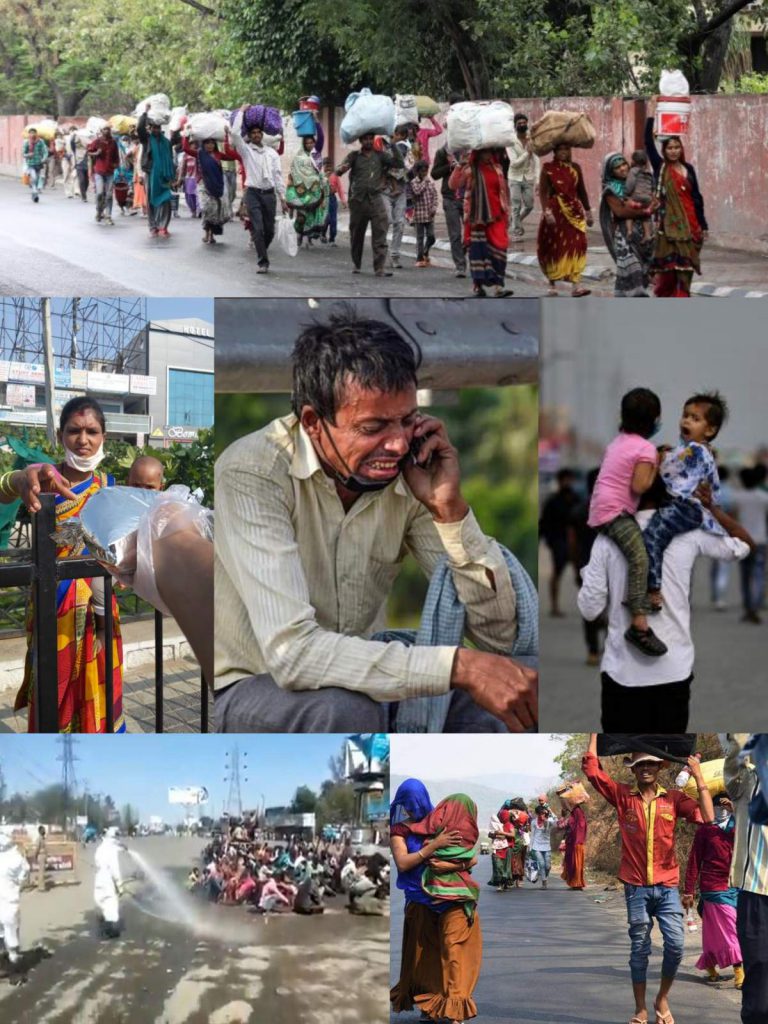Amidst lockdowns, the innovation India’s rural markets need

Abhinav is a 1st year MBA student of Rural Management in XIMB Bhubaneswar. Interested in the development sector he writes about ground level issues pertaining to rural landscape and politics of the country.
A discussion on the current impact of the ongoing lockdown on consumerism in rural India can be initiated in the realm of agriculture. In a village in Maharashtra, a farmer is not able to transport tomatoes to even small towns as the truck drivers are not operating because they have gone to their native village. This has prompted the farmers to sit idle with their produce creating a ripple effect in the market. COVID19 is likely to impact the Indian rural market, given how large the market is in our country. Due to the scarcity of tomatoes, the price will increase for the remaining stock. People are already developing stockpile shopping behaviours, which are evident in many places, creating a significant imbalance.
This is just one example of consumerism, and there are many sectors where there will be a massive paradigm shift among consumers. Until now, policymakers all across the world are not getting any solutions to tackling this problem, and the outbreak is already affecting the U.S. economy. According to the UN report, COVID- 19 has estimated a $ 348 million impact on the Indian economy. With the current economic crisis going on, the impact on the rural market will be manifold. According to WHO, the worst phase in China is over, which was the epicentre of the virus, and now the focus is on recovery, but we don’t know how long this will impact our rural market.
Background
The rural population account for almost 70% of the country’s population. But about 50% of the villages have people less than 500. This means that for marketers, it is tough to trace and study their consumer behavior. Big FMCG giants like Hindustan Unilever have already established their market in the rural landscape. Telecom companies like DOCOMO first went rural then ventured into the urban market. With the increase in income, rural consumers started to buy lifestyle products, including smartphones, as significant products. This implies that there is also the presence of hedonic motivation in consumers.
Broadly there is a specific set of products that dominate the rural market. Here, consumerism does not depend upon the brands but rather on the usability of the product, and the consumers will buy them according to their needs. Predominantly the FMCG and the FMCD companies are the main markets for rural consumers. Some products that the consumers buy are electronics essentials like refrigerators, televisions, kitchen appliances, make-up products, and food products mainly frozen/instant foods and daily items like edible oils, soda, soft drinks, and others. Of all the products, it is mainly the food and beverage industry that is deemed very much essential in their daily life.
Present scarcity
If a scarcity arises, then it will be in the food and retail sector because, in the current situation, the supply chain in the agricultural and food industry is highly disrupted. If no intervention takes place, and this scenario continues, then there is a very high probability that we all will be soon facing shortages of food supplies. For example- in the case of edible oil, nearly two-thirds of it comes through exports. Now given the current lockdown situation, there are not enough labourers for loading and unloading at container ports. This will result in the products lying idle and eventually leading to a shortage of edible oils in many places. Amidst the COVID-19 situation currently, there is already overconsumption of sanitary and hygiene items like sanitisers, soaps, and liquid hand washes.
We are already witnessing their shortages, and it is taking a continuous effort to maintain a supply chain that would make sure there is no scarcity in such a situation. Also, the production rate in the factories has decreased. This will lead us to be dependent on exports from countries like South Korea, where the factories are functioning at optimal capacity now. This factor will again reflect on consumer behaviour.
Challenges ahead
The challenges of Corona are proving to be much more severe than they initially seemed, and people are facing penury and deprivation. As the savings are very less, the families in Rural India are having fewer meals than before. They are not able to go out for work and earn a majority of them are engaged as daily labourers. The significant challenges ahead for rural people are the lack of employment and income as the informal industry mainly employs them. These industries are severely affected, so they are majorly adopting the policy of layoffs resulting in the loss of the rural household income. It is also evident that these migrants will return to their villages after the layoff putting more pressure on rural employment.
The challenges that the rural population is facing is extremely intense as the poultry producers and fisheries are facing a massive loss of demand. As a result, the price is also going down. There are also cases of rotten vegetables in some parts due to the failure of logistics. The rural haats, which is a very famous culture of rural areas, are also shut down because of the fear of the spreading of the contagion. This has resulted in a huge loss for the rural producers and also for the small and medium businesses who sell their products in the rural markets through these weekly village haats. The shutdown of these haats has also made it difficult for the marginal farmers who sell their produce in these areas, resulting in a complete loss. There is also a challenge in the supply chain which the businesses are facing as the majority of the factories have been shut down, a severe problem of the shortage of various products.
We need to ascertain that amidst this crisis, there should not be any major impact on the rural market, given the high stakes involved. Disrupting the existing model with innovation in the policy formulation as well as implementation is the key to device effective solutions in this hour.
Featured Image Credits: Wikimedia







Readers' Reviews (2 replies)